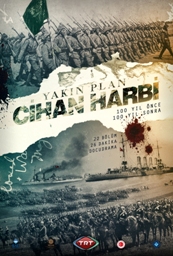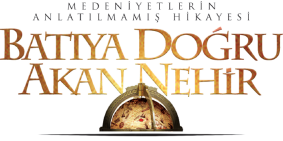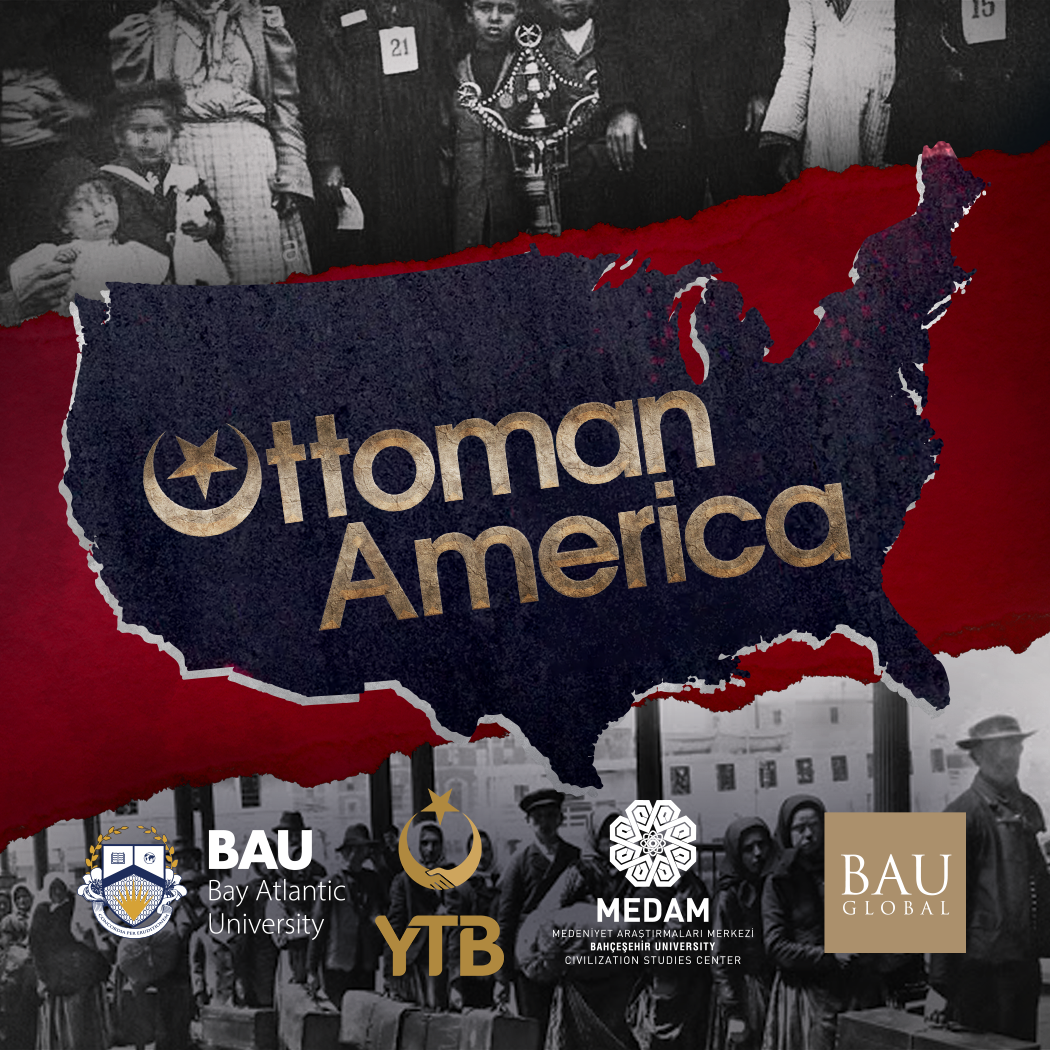Medeniyet Araştırmaları Merkezi tarafından hazırlanan “East To West” belgeseli Hindistan’da Discovery Channel tarafından yayınlandı.
Aşağıda ilgili haber:
New Delhi, May 15, 2012: It was in the rich and fertile lands along the great rivers of the east where civilisation was born. From the dawn of mankind and the first cities and empires to the belief in one God; Discovery Channel’s new series EAST TO WEST follows the flow of civilisation from the Middle East. From the foundation of science, monotheism, artistic expression, commerce, civil rights and justice – all of these ideals and more have their roots in Middle Eastern thought.
Starting May 21st, every Monday at 8 pm, Discovery Channel’s premiere series EAST TO WEST examines the role that Middle East has played in shaping world history and Western civilisation. It is an epic journey of discovery from the east to the west.
Middle East was an economic, scientific and cultural center of the world which has been a vital link between the continents of Asia, Africa and Europe for millennia. This land from ancient times has shaped the modern world, giving it agriculture, cities and the belief in God.
Commenting on the programme, Rahul Johri, senior vice president and general manager – South Asia, Discovery Networks Asia-Pacific said, “Shot in high definition, East to West is a landmark series which traces the story of the birth and growth of civilization in the Middle East and its huge influence on the West. With deep insight into history and picturesque visuals, it should immensely appeal to the Indian audience.”
Follow the first stages of civilisation: the rise of agriculture, governance and writing in Mesopotamia. Visit ancient Babylon (Iraq) and Mari (Syria) to explore the world’s earliest cities. Discover that our system of dividing hours and angles into blocks of 60 is a system derived from the geniuses of Babylon. Trace the story of the Prophet Mohammed in Mecca and the spread of Islam through the Middle East and North Africa. Follow the successors of Timur as they spread south into India, creating the wonders of the Mughal Empire. Explore the first temples of the Middle East and how the pantheon of Pagan God’s that ruled from Mesopotamia to Egypt and Greece to Rome, were over thrown by a revolutionary idea – monotheist (the belief in one universal God).
Trivia
. Rivers were the lifeline of civilization from the Indus and Ganges in India to the Nile in Egypt.
. Around 6,000 years ago between the two great Middle Eastern rivers the . . Tigris and Euphrates the world’s first cities began to emerge.
. Mari (now Syria) was a purpose built city sited on the banks of the Euphrates. The city was circular and was supplied with water by a central channel.
. Aphrodite was one of the greatest Greek goddess. In her sanctuary, archeologists have discovered beautiful figurines given as offerings to the goddess. From these, they have pieced together evidence showing the remarkable degrees in which the Greeks in Miletus absorbed eastern ideas even in their gods.
. The ancient city of Babylon, one of the first cities of civilization, had been a dominate power in Mesopotamia. The largest city on earth with the population of nearly 200,000 people, Babylon was a place of great wealth and architectural splendor.
The Epic of Gilgamesh is one of the earliest known works of literature dating back 1400 years before Homer.
. Babylonian astronomers kept precise lists of eclipses, equinoxes and solstices from 747 BC, 200 years before Thales predicted an eclipse. Thales of Miletus, a Greek, accurately predicted solar eclipse around 585 BC.
. The Babylonians were brilliant mathematicians. They were the first to use angles, degrees, fractions and equations. They didn’t count in our decimal system using ten as a base but used 60 instead, a method known as the sexagesimal system.
. The Babylonian numerical system also created the 12 signs of the zodiac. One brilliant Babylonian idea was that the sky was a sphere that can be measured in 360 degrees. They subdivided those 360 degrees into 12 sections of 30 degrees. Each of the 30 degree segments is associated with a particular constellation that appears near its middle and so we have Scorpio, Libra, Virgo, Leo, Cancer and so on.
. Judaism, Christianity and Islam share a belief in Abraham as the founding father of their faith. The story of Abraham first appears in Genesis, the first book of the Jewish bible.
. Istanbul is the only city in the world that sits astride two continents – Europe and Asia. It was once the capital of one of the greatest imperial powers in history, the vast Ottoman Empire.
Episode 1 – Between Two Rivers – This episode follows the birth of civilisation in Anatolia and the Middle East. The programme goes back to the very beginnings; hunter-gatherers pause in Gobekli Tepe and start to build the world’s first structures around 12,000 years ago. 2000 years later they start to settle and farm. The episode follows the first stages of civilisation: the rise of agriculture, governance and writing in Mesopotamia. Explore world’s earliest cities – ancient Babylon (Iraq) and Mari (Syria). Locate Alexander’s arrival in Troy and his conquest of the Persian Empire – a journey that made him realise what he owed to the East. In Miletus remarkable new finds show that the Greek god Aphrodite began as the eastern god Ishtar. Even today, we discover that our system of dividing hours and angles into blocks of 60 is a system derived from the geniuses of Babylon.
Episode 2 – The Triumph of Monotheism – Today one god is worshipped by two thirds of humanity. It is the culmination of an extraordinary story by which a single deity emerged from a pantheon of thousands in the crucible of religious ideas that was the ancient Middle East. In this episode viewers trace the birth, development and explosion of the religion of Abraham and Moses, from its very beginnings in Judaism to its triumph as Christianity within the Roman Empire. The episode also looks at the earliest form of monotheism, as devised by Akhenaten in ancient Egypt.
Episode 3 – A Force from the Desert – Today over a billion people in the world are Muslim. This is the result of one of the most unlikely and dramatic events in world history, when a people at the margins of world events defeated two of the world’s greatest superpowers to create a powerblock larger than the Roman Empire in only two generations. The programme traces the origins of the Arabs and Islam, from nomadic Bedouins to the sophisticated Nabataean cultures at Petra and the magnificent city of Palmyra. The episode follows the story of the Prophet Mohammed in Mecca and the spread of the empire through the Middle East and North Africa. This episode balances the usual images of fanatical jihadis, to reveal the surprisingly peaceful and tolerant process by which the Islamic empire spread. Viewers travel from Mecca to Damascus, Jerusalem to Cairo, Fez to Cordoba.
Episode 4 – The Muslim Renaissance – The Renaissance – the moment that marks the beginning of the modern world and the first steps on the road of rational scientific progress which would take us to the industrial revolution, modern medicine, air travel and the internet. But it was not just a European event. It began in Baghdad in the 8th Century AD. This episode reveals how a golden age of invention and scholarship thrived in the Islamic World at a time when Europe lingered in a dark age; how Muslim scholars brought together for the first time the ideas of the Greeks and Romans with Persian and Indian mathematics and astronomy and developed it into the beginnings of modern Science. The episode reveals the first contacts by which European scholars discovered this treasury of knowledge and how it was developed by generations of Arab-admirers (including Galileo & Copernicus) into modern science. This episode focuses on the House of Wisdom in Baghdad, the great university mosques of Cairo and uncovers ancient documents translated in Baghdad by Islamic scholars, now in the Bodleian Library, Oxford.
Episode 5 – The Asian Crucible – This spectacular episode explores the extraordinary powers and civilizations that have emerged from central Asia. First the Seljuk Turks took on the Byzantines, pushing their way into Anatolia. In a cave in Cappadocia we discover a long lost painting that reveals how the two cultures co-existed. The episode follows the Mongol invasions – in Bukhara and explores its destruction and in Esfahan, Iran it shows how the Mongols eventually converted to Islam and began to settle. Then in Uzbekistan again the film traces the rise of Timur and explores the glories of Samarkand. Finally the programme follows the successors of Timur as they spread south into India, creating the wonders of the Mughal Empire and the most iconic Taj Mahal.
Episode 6 – The Rise of the Ottomans – At the time of Elizabeth I, the greatest power in the world was not England, France or Florence, it was the Ottoman Empire – one of the world’s first truly global and multicultural Empires. Amazingly it is a crucial slice of world history, adorned with stunning palaces, advanced technology and brilliant artworks, which is often ignored by television history. The episode follows the rise of the Ottomans in the Anatolian city of Bursa and tells the dramatic story of how they conquered Byzantium and transformed Istanbul. The great Topkapı Palace of Istanbul is the stage on which we describe the growth of the Ottoman Empire and hear of the unprecedented developments in science and the arts ushered in by the rule of enlightened Sultans.
Episode 7 – The Ottomans and the West – The Ottoman Empire reached its zenith in the reign of Suleyman the Magnificent. The episode explores some of his greatest creations – the treasures of Tophkapi and the beautiful mosques designed by Sinan. The film looks at the wider Ottoman world, taking in superb merchants’ houses in Birgi (Anatolia) and Damascus. At the edge of empire, on the Persian border near Mt Ararat, the episode discovers how the Ottoman’s controlled the extremities of Empire at Ishak Pasha’s magnificent palace. The film then explores the growing European fascination with ‘The Orient’ throughout the 19th century, both as a place of culture and also as a trading partner and market for mass produced western goods. We end by tracing the decline of the Ottoman Empire in the dying days of the19th century, a time when the Sultans still managed to achieve great feats, including the building of the great Hejaz Railway across the Arabian desert.









